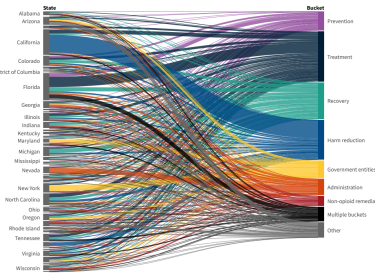
Providers & the LGBTQI+ Community
LGBTQ+ people suffer from substance use disorders (SUD) at higher rates compared to their non-LGBTQ+ counterparts.
One major reason for this? Systematic oppression. LGBTQ+ people face higher rates of discrimination, family estrangement, and abuse. Furthermore, when LGBTQ+ people seek help for their SUD, affirming and competent care is often unavailable, and the care that is found is not suited to the population’s needs. How can someone be expected to recover from their SUD if they do not feel safe in their treatment?
Those in the LGBTQ+ community are less willing to share information about their SUD during a doctor’s appointments compared to cisgender and heterosexual peers.
This is because of a fear of prejudice and discrimination. It is difficult to be open with your doctor when you are being misgendered, when you aren’t fully believed, or when the doctor has a lack of understanding of your identity.
Transgender people face particularly difficult barriers when trying to access treatment. Some examples of barriers are health care providers refusing or avoiding discussions on SUD and gender issues concurrently, and insurance providers not including coverage to gender affirmation surgeries, hormone therapy, or healthcare to transgender patients.
If you are Black, Indigenous, or a person of color within the transgender community, SUD treatment is even harder to access. The intersection of these identities makes culturally affirming care even more important.
What can service providers do to provide better access to SUD treatment for the LGBTQ+ community?
First, there is a need for LGBTQ+-specific care that is competent, affirming, and helpful. This can be achieved by health care providers receiving extensive education to understand and respect all LGBTQ+ identities. Providers must ensure their offices are respectful of pronouns, chosen names, different relationship models, and affirming of identities.
When utilizing SUD treatments, studies have shown that traditional treatments are less effective for LGBTQ+ populations. LGBTQ+ populations need specialized care that better addresses their trauma and experiences, and that more effectively creates community.
Health care providers must also become active advocates for the LGBTQ+ community and work towards reducing the societal stressors that make SUD rates in LGBTQ+ populations so high. It is also important for providers to focus on the disease model of addiction and genetic contribution from family history to mitigate the effects of compounded stigma.
Pride may only be one month out of the year, but ending the stigma of substance use disorders in the LGBTQ+ population is an ongoing effort all year long.
And it’ll only succeed if health care providers work together to make treatment accessible to everyone.
Q Garcia is a Social Work student passionate about grassroots organizing in Washington, D.C.
Grace Lee is a Master of Public Health student at the University of North Carolina Chapel Hill - Gillings School of Public Health.



